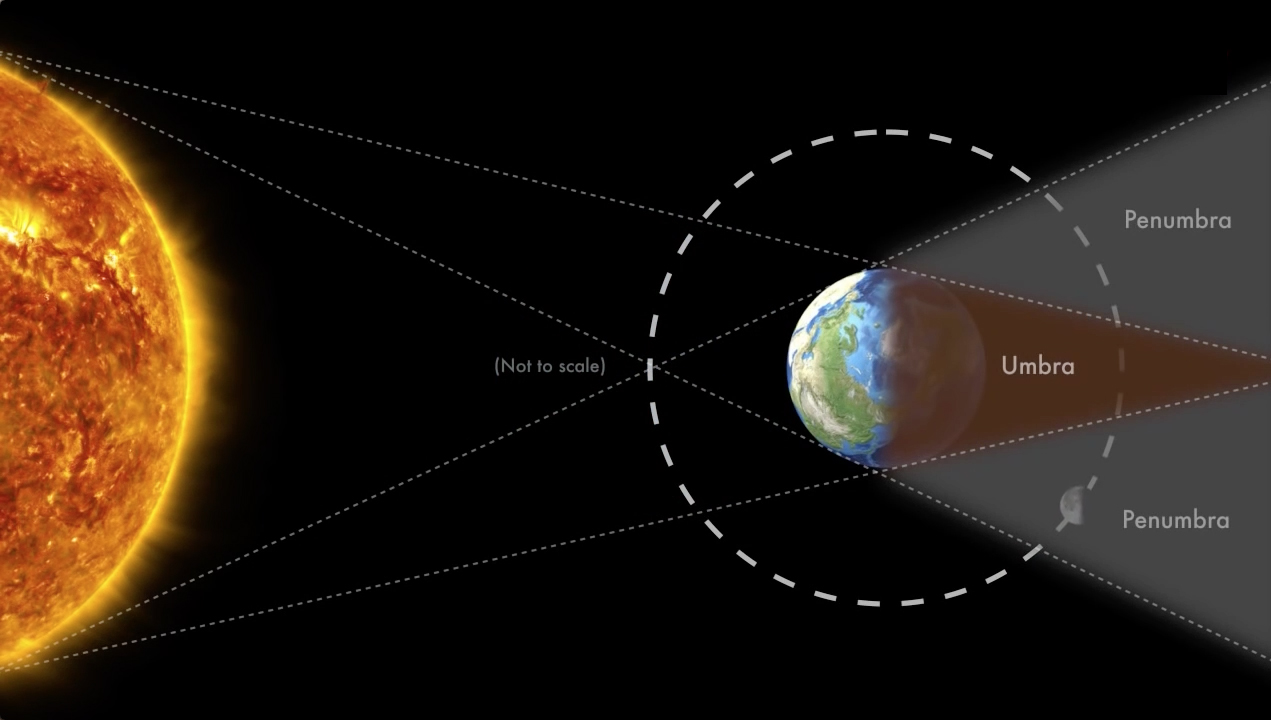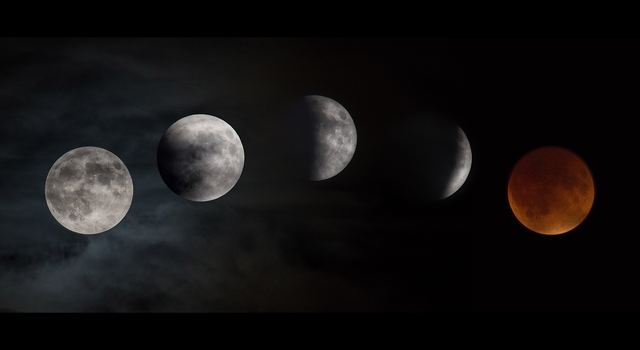
ST. GEORGE — Skywatchers across Utah and beyond will have the opportunity to watch three lunar events come together to provide a bigger, bloodier moon that will make a special one-night appearance this weekend.

The first and only total lunar eclipse of the year will happen Sunday night, but it also comes with something extra as a full moon tinted with crimson will appear larger in the sky and is one of only three times this century that three elements will come together to create a “super blood wolf moon.”
First, it’s a total lunar eclipse
A lunar eclipse occurs when the Earth passes directly between the sun and the moon, blocking most of the light from the sun and plunging the lunar nightlight into the planet’s shadow, according to NASA.
“What a lunar eclipse displays is the color of all of Earth’s sunrises and sunsets reaching the moon,” NASA scientist Noah Petro told Space.com last week.
Even so, the moon does not turn completely black like the sun does during a solar eclipse as a small amount of sunlight still slips past the outer edges of the Earth and scatters before it hits the moon.

Then, it’s a ‘blood moon’
While the moon itself produces no light and is merely the beneficiary of our sun’s rays, it is actually Earth’s atmosphere refracting sunlight that causes the morphing color of the moon during a lunar eclipse. Depending on certain factors such as Earth’s volcanic activity or humidity, the intensity and shade of the moon can alter from a rosy hue to a dark crimson, which is one of the reasons it is referred to as a “blood moon.”
It’s also a ‘supermoon’
Instead of a revolving around the earth in a circle, the moon makes its journey around the planet in an elliptical orbit, so the distance between the moon and the earth changes, depending on where the moon is in its journey.
When the moon is at its closest, or roughly 225,700 miles away, it is referred to as a “supermoon,” which also makes the moon appear nearly 15 percent bigger and 30 percent brighter than an average full moon.
And a ‘wolf moon’
A “wolf moon” refers to any full moon that takes place in January, a moniker used by the indigenous tribes in North America that used to keep track of the seasons by observing the full moons, and refers to all of the wolves that “howled in hunger outside the villages” in January, according to the Farmer’s Almanac.
Lunar phases and total eclipses
A new moon occurs roughly every month, when the moon’s far side is facing the sun and its near side is in darkness, and since it is tidally locked, anyone viewing it from Earth sees the same side, every time, so when the moon is between the sun and Earth, it cannot be seen in the sky since the dark side is not visible.
A lunar eclipse occurs during the full-moon phase, and a solar eclipse takes place during the phase of a new moon.
Sunday, Jan. 20
- Penumbra eclipse | 7:36 p.m. | The time the moon enters Earth’s penumbra, or the outer part of the shadow.
- Partial eclipse | 8:33 p.m. | One corner of the moon will turn a reddish color, that spreads slowly.
- Full eclipse | 9:41 p.m. | The entire moon will be a crimson color.
- Maximum eclipse | 10:12 p.m. | The moon is closest to the center of the shadow, and will be a deep crimson color.
- Full eclipse ends | 10:43 p.m. | The moon will begin to lose its reddish color.
- Partial eclipse ends | Sunday 11:43 | When the full moon will regain its brightness.
At 12:48 a.m. Monday, the penumbral eclipse ends and the full moon returns to normal.
NASA keeps a list predicting lunar eclipses until 2100. It also keeps data about past lunar eclipses. During the 21st century, Earth will experience 228 lunar eclipses, according to the space agency.
Click on photo to enlarge it, then use your left-right arrow keys to cycle through the gallery.
As the moon moves completely into the umbra, it turns a reddish-orange color. | Image courtesy of NASA, St. George News During a total lunar eclipse, the moon first enters into the penumbra, or the outer part of Earth's shadow | Image courtesy of NASA, St. George News The supermoon lunar eclipse captured as it moved over NASA’s Glenn Research Center on September 27, 2015 | Photo courtesy of NASA, St. George News


Email: [email protected]
Twitter: @STGnews
Copyright St. George News, SaintGeorgeUtah.com LLC, 2019, all rights reserved.

